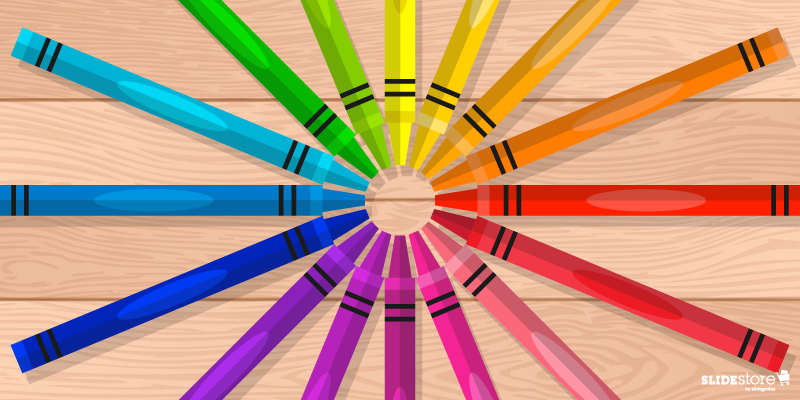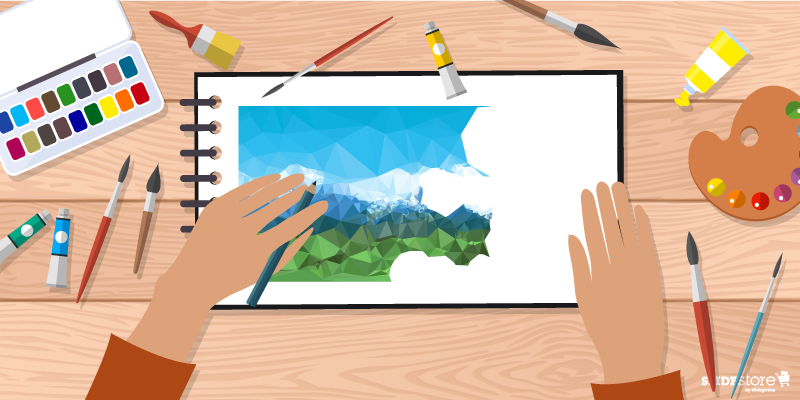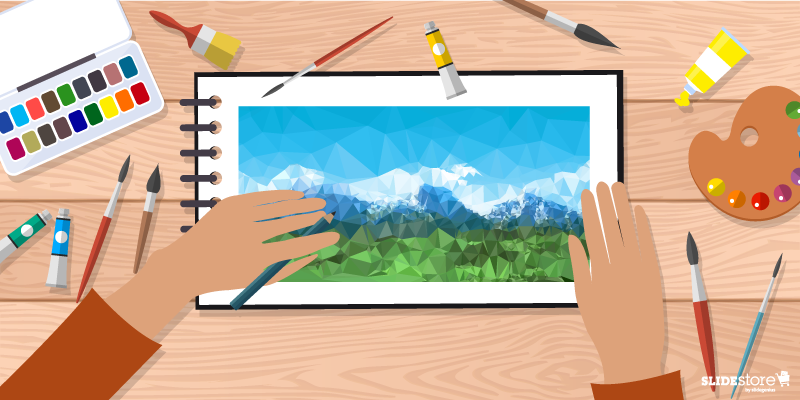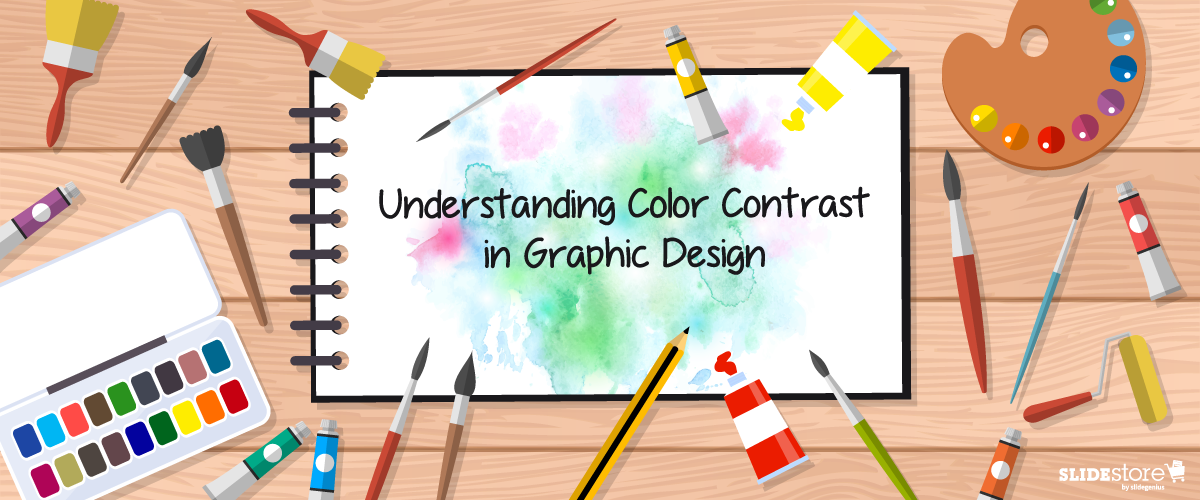Whether you’re proficient in design or not, you ought to possess at least a single grain of knowledge about color contrast. It’s a principle that can be seen everywhere, although it’s mostly prominent in graphic design and other art-related fields. Color contrast refers to the stark visual differences that make an object distinct from others. The polarity of black and white, two colors known to be the ultimate opposites, is a classic example that illustrates this design principle. As a designer, however, you need to learn to work on a more diverse palette that transcends these two so that you can explore other ways of achieving color contrast.
The Importance of Contrast in Design

A simple way to weed out amateur designers from the cream of the crop is by judging the way they apply contrast in their work. Contrast—whether it be of shapes, typography, or color—is the foundation of every artistic masterpiece. You have to be conscious of how you use it since it can be the single most important element that can make or break your design. Color is one of the first things that register in our subconscious when we look at a work of art. A design piece that fails to employ color contrast effectively can result to a jarring spectacle that can strain the audience’s eyes and cause them to withdraw their gaze. As all designers can agree on, there’s no thought worse than knowing that nobody wants to see the fruits of their labor.
Color contrast is important for three reasons:
- It attracts the eye. People are subconsciously drawn to artworks that use contrast seamlessly. This principle is attractive to the eye because it creates visual interest. When done correctly, color contrast shouldn’t be noticed. When done the wrong way, however, it glares like a flagrant sin.
- It reinforces an idea. Colors carry a certain weight, so when they’re used effectively, they can impact viewers manifold. Use color contrast to strengthen your message.
- It shows hierarchy. Color contrast can create a focal point and establish a hierarchy of importance in your design. With this design principle, you can draw people to a certain area of a page without telling them outright that it’s what they should focus on.
Make sure to strike a balance when applying color contrast. Using this design principle excessively is just as bad as not applying it at all.
Johannes Itten’s Seven Kinds of Color Contrast

Mastering color contrast is just like mastering any other skill—it takes practice. There are no hard and fast rules, no shortcuts, and no magic formulas that you can count on. Cultivate your eye for design and work hard on finetuning it. To better understand color contrast, you need to learn its different aspects and forms. Johannes Itten, a Swiss expressionist painter, was among the first to make a theory about the possible types of color contrast. Here are seven of them:
1. Contrast of hue
Hue refers to the name of a specific color that is typically found on the color wheel. You don’t have to apply hues in their purest forms since they might clash. You can lighten or darken them to resemble real-life contexts. When used right, the contrast of hue can create a vivid effect on your design.
2. Contrast of saturation
Saturation refers to the purity of a color; that’s why this type of contrast is also known as the contrast of pure colors. A color in its brightest form is 100% saturated, but by diluting its intensity, you can abate its impact to create a better effect. You can desaturate a color by mixing it with white (tints), black (shades), or gray (tones). When used well, the contrast of saturation can be a unifying factor that leads to a harmonious composition in your design.
3. Contrast of temperature

Mixing warm (red, orange, yellow) and cold (blue, violet, green) colors in a design is also another form of color contrast. This type of contrast can create a dramatic effect, especially when one side is dominant and the other is subservient.
4. Contrast of simultaneity
This refers to the effect colors have on each other. It is derived from the law of complementary colors, in which colors cancel each other out to produce an achromatic light mixture (white, gray, or black). This means that if a certain color is absent, the eye will produce its complement.
5. Contrast of extension
Also known as the contrast of proportion, the contrast of extension refers to the effect of amplifying the impact of a certain color by placing it in a dominant spot. This type of contrast underlines the fact that colors can appear weaker or more dominant depending on their arrangement or placement in a design. When using this, keep in mind that the dominant color shouldn’t overpower the surrounding hues but rather unify them.
6. Contrast of dark and light colors
This type of contrast refers to the brightness of colors—how light or dark they are. Playing light and dark hues off of each other will make your design more powerful and dramatic. Using a high light/dark contrast will allow you to determine which parts of your design are the most important.
7. Contrast of complements
This refers to color pairings that tend to intensify both colors. As you know, complementary colors occupy opposite positions in the color wheel. When adjacent, they intensify each other’s power, but when mixed, they nullify each other by producing a grayish black hue. Exploring color contrast can take your design to the next level. Use it to its optimum and watch your masterpieces soar into new heights, making you worthy of the title, “designer.”
Resources:
Aaberg, Kasper. “Color Contrast: All About the Difference.” Love of Graphics. n.d. www.loveofgraphics.com/graphicdesign/color/colorcontrast Farley, Jennifer. “Principles of Design: Contrast.” SitePoint. December 3, 2009. www.sitepoint.com/principles-of-design-contrast
Jones, Henry. “The Principle of Contrast in Web Design.” Web Design Ledger. February 3, 2010. webdesignledger.com/the-principle-of-contrast-in-web-design
Kliever, Jane. “Designing with Contrast: 20 Tips from a Designer (with Case Studies).” Canva. September 22, 2015. designschool.canva.com/blog/contrasting-colors
O’Nolan, John. “Fully Understanding Contrast in Design.” Web Designer Depot. September 17, 2010. www.webdesignerdepot.com/2010/09/fully-understanding-contrast-in-design
Roach, Nick. “Four Quick Tips for Improving Color Harmony in Your Theme Customizations.” Elegant Themes. August 26, 2013. www.elegantthemes.com/blog/resources/four-quick-tips-for-improving-color-harmony-in-your-theme-customizations
“It’s Not Just Black and White: Understanding the Importance of Contrast in Graphic Design.” Pluralsight. March 9, 2014. www.pluralsight.com/blog/creative-professional/just-black-white-using-contrast-get-attention-graphic-designs
Corrigan, Dennis & Hoffer, Peter. “The Seven Color Contrasts: Based on the Work of Johannes Itten.” Marywood. n.d. www.marywood.edu/dotAsset/45ee9b19-5c3a-47bc-974b-47436488e792.pdf








